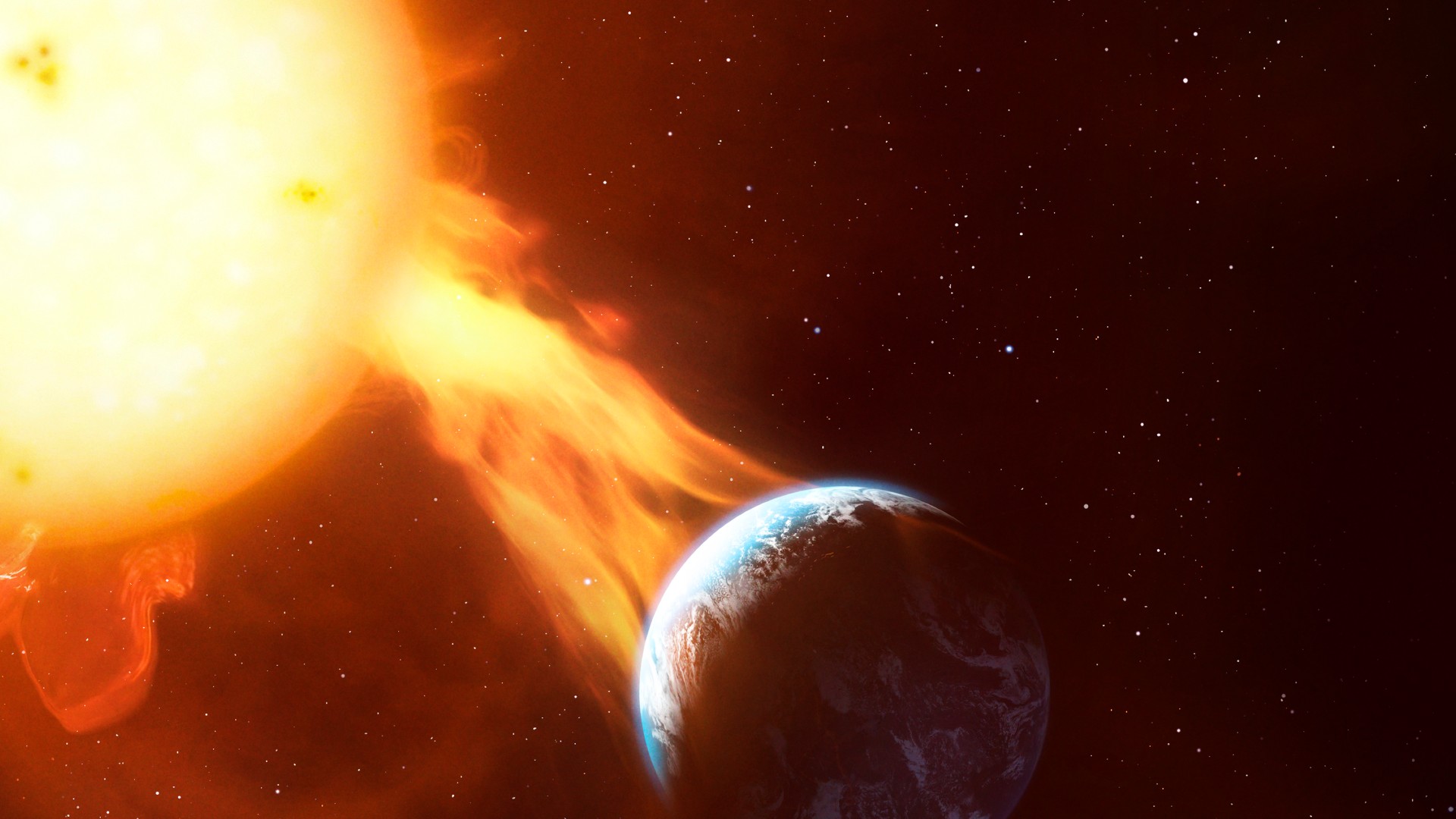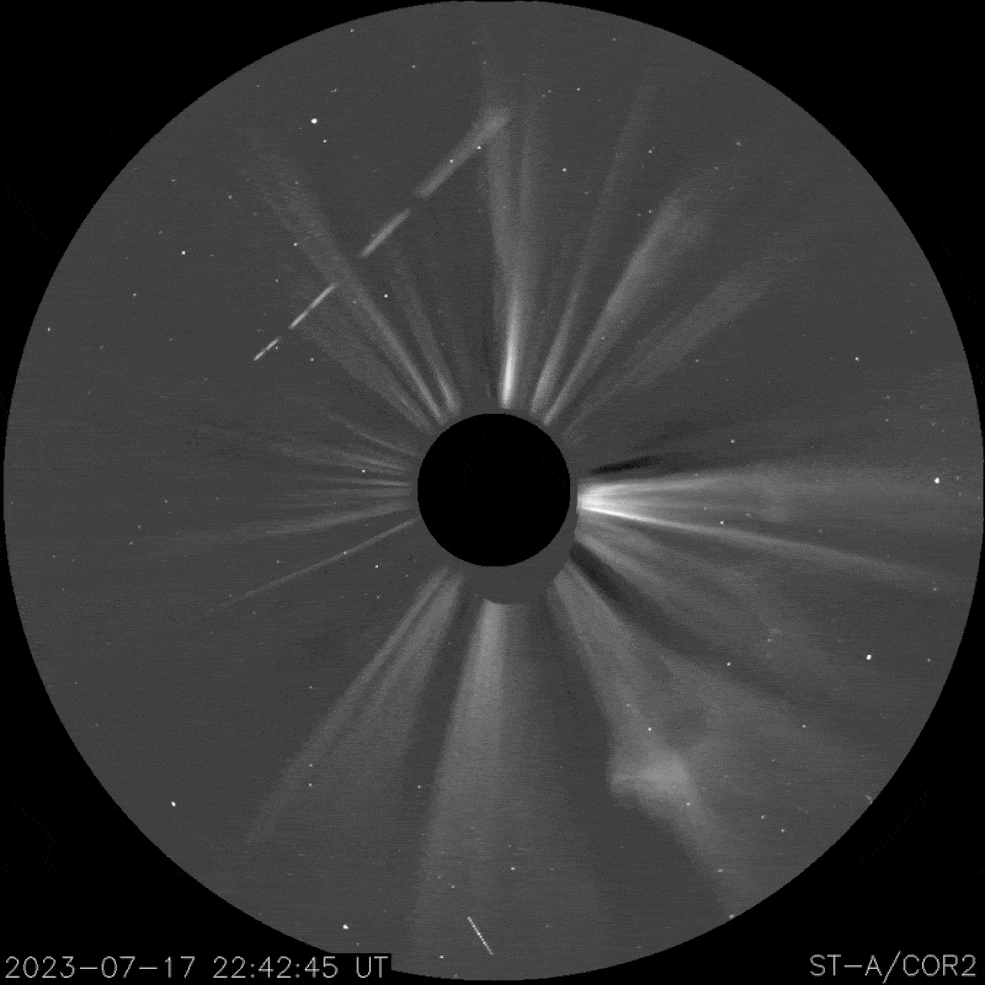14,000 years ago, the most powerful solar storm ever recorded hit Earth. 'This event establishes a new worst-case scenario'
A storm as ferocious as the one of 12,350 BC would likely cause complete mayhem if it were to strike Earth and its surrounding space today.

An extreme solar storm hit Earth some 14,300 years ago, more powerful than any other such event known in human history, a new analysis of radiocarbon data has revealed.
The solar storm, the only known to have taken place in the last Ice Age, long eluded scientists as they lacked appropriate models for interpreting radiocarbon data from glacial climate conditions.
But a new study by a team from the Oulu University in Finland has taken a stab at the measurement interpretation with eye-opening results. Using a novel chemistry-climate model, the team found that the marked spike in the carbon-14 isotope detected in fossilized tree rings was caused by a solar storm more than 500 times as powerful as the 2003 Halloween Solar Storm, which was the most intense in modern history.
Solar storms generate major disruptions to Earth's magnetic field and dump enormous quantities of charged particles into the planet's atmosphere. These particles, mostly high-energy protons, boost the natural levels of carbon-14 — a radioactive isotope of carbon also known as radiocarbon. Carbon 14 is produced by interactions of nitrogen atoms in the atmosphere with cosmic rays. Scientists can use radiocarbon concentrations to date organic materials as the isotopes decay over time.
In 2023, a major spike in radiocarbon concentrations in fossilized tree rings was discovered, indicating a major solar storm must have taken place as the last ice age was drawing to an end.
The new study was finally able to precisely assess the magnitude of that solar storm and date it more accurately. The scientists believe that solar storm took place between January and April in the year 12,350 BC, likely dazzling the hundreds of thousands of mammoth hunters who lived in Europe at that time with the most awe-inspiring aurora borealis.
"The ancient event in 12,350 BC is the only known extreme solar particle event outside of the Holocene epoch, the past approximately 12,000 years of stable warm climate," Kseniia Golubenko, a postdoctoral researcher at the University of Oulu and lead author of the new study, said in a statement. "Our new model lifts the existing limitation to the Holocene and extends our ability to analyze radiocarbon data even for glacial climate conditions."
Get the Space.com Newsletter
Breaking space news, the latest updates on rocket launches, skywatching events and more!
Scientists previously studied records of five other radiocarbon spikes found in tree ring data, which they attributed to powerful solar storms that had taken place in 994 AD, 775 AD, 663 BC, 5259 BC and 7176 BC.

The strongest of these "Holocene" events was the 775 AD solar storm, which pummeled Earth at a time when Charles the Great reigned over the post-Roman Frankish empire in medieval Europe. Few written records have been preserved depicting that storm, but historians found hits of it in ancient Chinese and Anglo-Saxon chronicles.
The recently analyzed storm of 12,350 BC was even stronger, having deposited about 18% more charged particles into the atmosphere, the study reveals.
The scope of these enormous solar storms is important to understand for technology experts in the 21st century, which is much more vulnerable to the whims of the sun due to society's dependence on electronic systems and space technologies.
"This event establishes a new worst-case scenario," Golubenko said. "Understanding its scale is critical for evaluating the risks posed by future solar storms to modern infrastructure like satellites, power grids, and communication systems."
Other solar storms in recent history show us just how much damage the sun's outbursts can cause here on Earth. The 1859 Carrington Event took down telegraph wires all over the world. The Halloween Storm of 2003, which was ten times weaker, caused chaos in Earth's orbit as satellites' trajectories changed unpredictably in the atmosphere which was suddenly much more dense due to interactions with charged particles from the sun.
The Gannon Storm of 2024, similar in strength to the Halloween Storm, raised concerns of space sustainability experts as it triggered a "mass migration of satellites" when thousands of spacecraft began firing their thrusters to make up for altitude loss caused by atmospheric density changes. A storm as ferocious as the one of 12,350 BC would likely cause complete mayhem if it were to strike Earth and its surrounding space today.
The study was published in the journal Earth and Planetary Sciences Letter on May 15.
Join our Space Forums to keep talking space on the latest missions, night sky and more! And if you have a news tip, correction or comment, let us know at: community@space.com.

Tereza is a London-based science and technology journalist, aspiring fiction writer and amateur gymnast. Originally from Prague, the Czech Republic, she spent the first seven years of her career working as a reporter, script-writer and presenter for various TV programmes of the Czech Public Service Television. She later took a career break to pursue further education and added a Master's in Science from the International Space University, France, to her Bachelor's in Journalism and Master's in Cultural Anthropology from Prague's Charles University. She worked as a reporter at the Engineering and Technology magazine, freelanced for a range of publications including Live Science, Space.com, Professional Engineering, Via Satellite and Space News and served as a maternity cover science editor at the European Space Agency.
You must confirm your public display name before commenting
Please logout and then login again, you will then be prompted to enter your display name.
